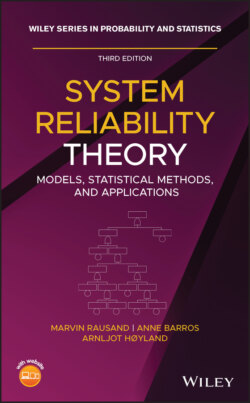Читать книгу System Reliability Theory - Marvin Rausand - Страница 115
Chapter 3 Failures and Faults 3.1 Introduction
ОглавлениеFailure is the most important concept in any reliability study, where typical questions addressed include:
How long time will the item, on the average, be able to operate until the first failure occurs?
What will the frequency of failures be? How many failures per year should we expect?
What is the probability that the item will operate without failure during a specified time interval?
If an item is demanded, what is the probability that it will fail to perform as required?
If we do not have a clear understanding of what a failure is, the reliability study may be of limited value. The term failure is used frequently in our daily language with many different interpretations and we also use a plethora of terms with similar meaning. Among these terms are blunder, breakdown, bug, collapse, defect, deficiency, error, fault, flaw, impairment, malfunction, mishap, mistake, and nonconformance.
How the term failure is interpreted varies between professional disciplines. Engineers working with quality, maintenance, warranty, safety, and reliability may have quite different opinions about whether or not a particular event constitutes a failure.
To perform a reliability study, it is important to understand thoroughly what is meant by the term failure in the context of reliability. Several definitions of failure have been proposed. IEV 192‐03‐01, for example, defines failure as “loss of the ability to perform as required.”
This chapter is concerned with failures of single items only. Aspects related to interactions between several items in a system are treated in Chapter 4. Before continuing the discussion of failures, the concepts of states, transitions, and operational modes need to be introduced.
